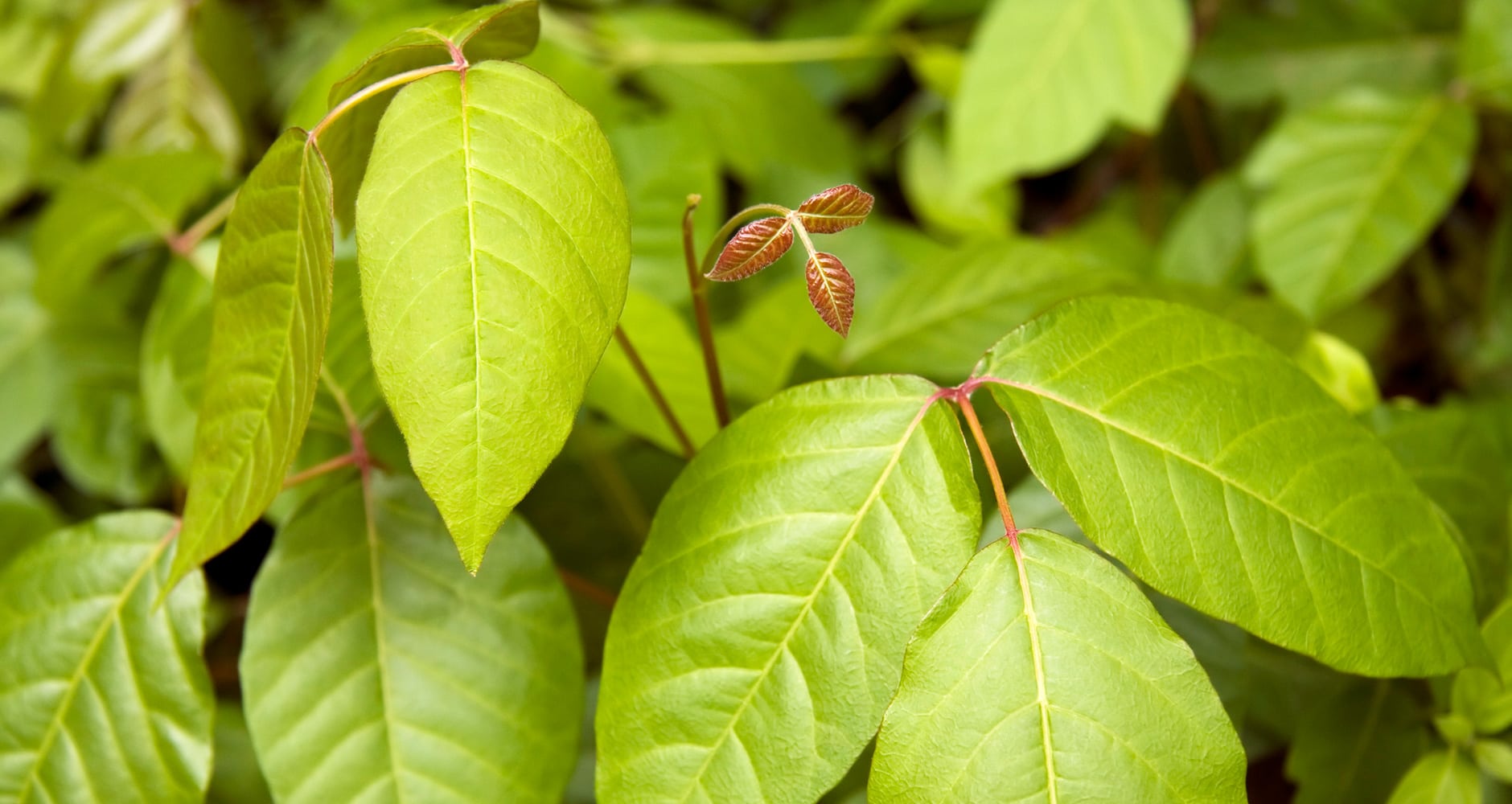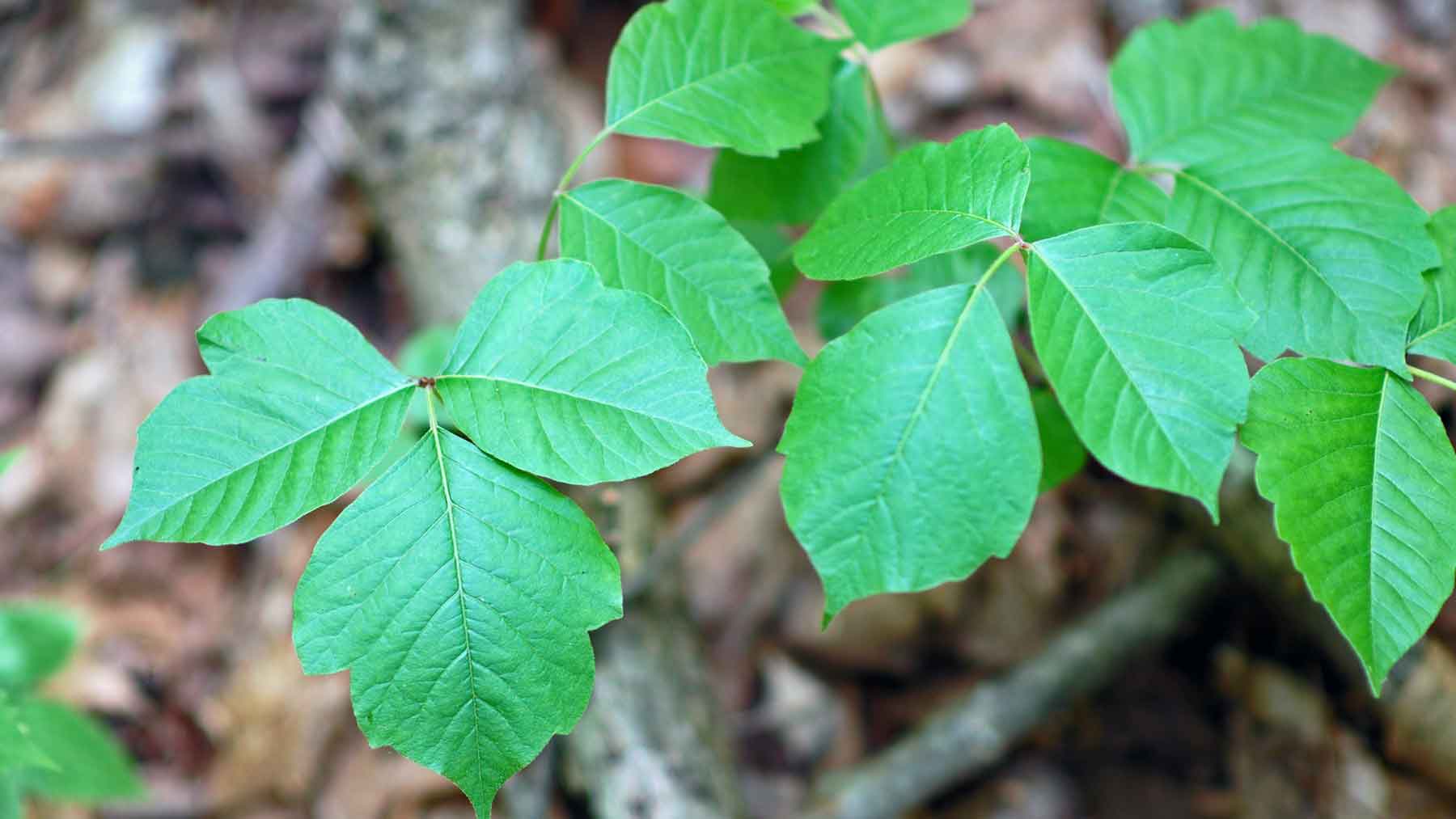

As the plant ages throughout the seasons, the leaves will change color and texture losing their initial glossy appearance. In early spring and summer, the leaves will appear red and have a glossy look.

The veins in poison ivy are very prominent in all three leaves. The two side leaves can also resemble a mitten, having one defined, segregated point similar to the ‘thumb’ in a mitten. The two side leaves branch directly off from the stem, while the middle leaf is larger with a protruding stem. The leaves will have jagged edges, pointy tips, and can grow to a size of 2-5 inches long. In order to remember how many leaves poison ivy has, there is a popular saying that goes “Leaves of three? Let it be.” This chant was created because poison ivy always comes in a set of three oval leaflets. Leaves: Always in Three, Jagged Edges, Pointy Tips, Middle Leaf on a Longer Stem The following pictures of poison ivy will help identify each part of the plant and spot it easily next time you're out on a hike. Poison Ivy can be difficult to identify, however, there are a few details you can look for that will help you distinguish it from other plants. In this post, we’re discussing specific features you can look for on this plant to effectively identify and steer clear of it. Not only do its leaves change colors depending on the season, but the plant itself can grow in many forms like small shrubs, carpet-like ground coverings, or even climbing vines. However, this may take some practice as poison ivy can be one tricky little transforming bugger. It’s important to learn its telltale signs so you don’t accidentally come into contact with it. Poison ivy can grow in forests, near water, and also in urban environments. Compared to poison oak or sumac, poison ivy is the most common and widespread of the three popular toxic plants.


 0 kommentar(er)
0 kommentar(er)
